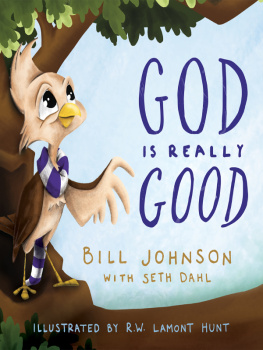
The first insiders view of Kinchela Aboriginal Boys Home, and an important insight into the brutality of the New South Wales governments policy of assimilation.
Dr Gordon Briscoe
This is a frank insiders story of a stolen child who becomes an angry addicted young man and then through a life-changing conversion, the compassionate pastor of his people on The Block, Redfern. Bill Simon tells his story with humanity and hope. It needs to be widely read by Australians as a window into the challenges faced by our indigenous men. I commend Bill for his courage and honesty.
Tim Costello, Chief Executive, World Vision Australia
Bill said to me once, when we came out of Kinchela, the white people didnt want us and our own people didnt know us. We are the forgotten ones. I hope this book will reveal the great pain and suffering caused to all Stolen Generation men and women and helps us all to heal together.
Pastor Ray Minniecon, Kinchela Boys Home Aboriginal Corporation
Bill Simon has a heart of gold and a passion to see his peoples lives turned around. He speaks with an openness and a passion that touches the lives of others deeply, simply by telling his own story. Read it and be inspired.
Rev. John Macintyre
BACK ON THE BLOCK
BILL SIMONS STORY
William Simon, Des Montgomerie and Jo Tuscano
For all the members of the Stolen Generations who have passed away.
Aboriginal and Torres Strait Islander people are respectfully advised that this publication contains names and images of deceased persons, and culturally sensitive material. AIATSIS apologises for any distress this may cause.
Contents
Illustrations
Traditional life in the Purfleet region: fishing and hunting. (Haddon Collection/Manning Valley Historical Society) |
Purfleet Mission Hall and Residence, 1937. (Source unknown) |
Purfleet Mission schoolchildren with resident missionary |
Miss Maud Oldrey, 1910. (New South Wales State Archives) Purfleet Mission. (Source unknown) |
Letter to Aborigines Welfare, July 1957 |
Class at Kinchela Boys Home. (Dawn, August 1965) |
A dormitory at Kinchela. (Dawn, March 1952) |
Koala drawn by Albert Cooper, aged twelve, resident in Kinchela. (Dawn, August 1965) |
A baptism. (Collection of Bill Simon) |
Bill Simon outside his house on The Block, 1989. (Collection of Bill Simon) |
Bill Simons house, with cross in Aboriginal colours on the balcony, 2008. (Collection of Bill Simon) |
Bill Simon ministering on The Block. (Collection of Bill Simon) |
Men performing on The Block. (Collection of Bill Simon) |
Riot in response to the death of T J Hickey. (Collection of Bill Simon) |
Demonstration demanding a re-opening of the inquest into the death of T J Hickey. (Collection of Bill Simon) |
Kinchela reunion, 2002. (Courtesy of Tom Mayne) |
Sorry Day, 2008. Bill Simon meets Kevin Rudd. (Collection of Bill Simon) |
Bill Simon and his mother Grace Simon in 1996. (Collection of Bill Simon) |
Bill and Murray Simon in 1975. (Collection of Bill Simon) |
Bill Simon and his daughter Vicky on The Block. (Collection of Bill Simon) |
Bill Simon in front of posters: Kinchela Boys Home: Why, and Sorry Day, 2008. (Collection of Bill Simon) |
Acknowledgments
The authors would like to thank the following people: Des Simon, the Simon family, Colin Davis, Harold Little, Tom Mayne of World Vision Australia, Ray Minnicon of World Vision Australia, Maurie Garland, photo curator of Manning Valley Historical Society, Manning Valley Shire Council, Julie Welsh, Mark Eddlebuttle, Deborah Tobias, Carol Montgomerie, Frank Tuscano, Dr Gordon Briscoe, and the staff at Aboriginal Studies Press
The authors have made every effort to trace copyright in the images reproduced here. We would be grateful if any copyright holders who have not been acknowledged could contact us care of Aboriginal Studies Press.
Editors note
Passages in italic type have been added by the editors.
Sources
The authors accessed the following sources from which material is cited in the text:
Human Rights and Equal Opportunity Commission, Bringing Them Home: Report of the National Inquiry into the Separation of Aboriginal and Torres Strait Islander Children from Their Families, 1997 (available on line at http://www.humanrights.gov.au/Social_Justice/bth_report/report/index.html).
Ramsland, John. The Aboriginal School at Purfleet. Part 1: The Development of Segregated Aboriginal Schooling from 1900, Manning Valley Historical Society Journal no. 29, November 2006.
Read, Peter, The Stolen Generations: The Removal of Aboriginal Children in New South Wales 1883 to 1969, Occasional Paper no. 1, New South Wales Department of Aboriginal Affairs, 1981 (reprinted 2006, available on line from http://www.daa.nsw.gov.au/publications/StolenGenerations.pdf).
Foreword
On 13 February 2008 when Prime Minister Kevin Rudd delivered his historic apology to the stolen generations, he acknowledged that the assimilationist policy of removing Aboriginal children from their families was a stain on Australias history. In Back on the Block, Bill Simon explains why.
There could be no crueller process than removing children from an environment in which they were loved and placing them in one where they are humiliated, physically, emotionally and sexual abused and rarely received affection or comfort. It breaks the spirits of the children who suffer under such a regime. It also breaks the spirits of the parents who, despite their efforts to care and provide for their children, lose them to state institutions.
Through this generous and frank account of his life, Bill Simon illustrates why so many lives were destroyed by the treatment received under state care. His is a story of the horrors and terrors of life at Kinchela Boys Home and it explains why so many boys who were removed from their families and raised in institutions turned into men who were full of anger and devoid of the capacity to love.
Bills own experiences gave him many emotional issues to deal with. His ability to find a way to come to terms with the impact of his childhood is a heroic story. While Bill is frank about his own personal shortcomings, his mistakes and his regrets, the fact that he was able to transform his self-destructive behaviour and his anger into a life focused on helping others who were less fortunate is inspirational.
Aboriginal culture is one that has a strong tradition of story telling. Bill Simons account of his life is a gift that follows this tradition. With such an honest telling of his story, remarkably devoid of self-pity but rich in self-reflection, we are shown why it was so important to never forget the stories of the stolen generations and to remember why it was so important for Australias growth as a nation to acknowledge this great historical wrong.














